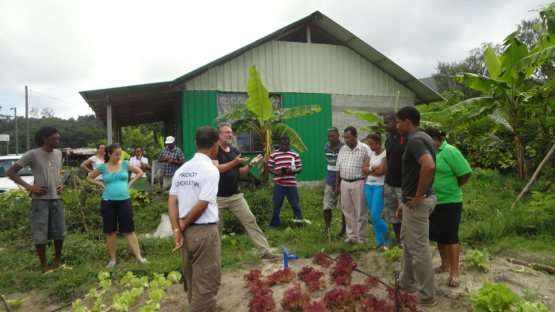The Seychelles, an archipelago of 115 islands and atolls, has limited land resources. The islands’ soils have very low organic matter content, low water retention capacity and high salinity, and are generally infertile. This affects the livelihood of farmers and the food security of the country’s local communities. With IAEA support, the islands’ farmers are now learning more about sustainable soil and water management to improve their crop yields and secure their livelihoods.
“The effect of IAEA assistance was almost immediate,” said Jean-Paul Geffroy, owner of Geffroy’s Farm. “It helped me better understand the content of my soil, what to do next, what I was doing wrong, and what I could do better.” Hear more about Geffory's experiences in this audio interview.
The IAEA-supported technical cooperation project aims to assess soil degradation using radionuclides and stable isotopes to quantify soil erosion and to develop effective soil conservation measures.
This project is an example of how the quality of soil, a precious resource and a source of life, can deeply affect the lives of people. The IAEA’s collaboration with Member States is also a reflection of the importance it puts on recognizing United Nations World Environment Day today with the theme, “Consume with Care”, as well as the Food and Agriculture Organization of the United Nations’ designation of 2015 as the International Year of Soils with the theme, “Healthy Soils for a Healthy Life”.
Addressing the complications of soil salinity and sodicity
The Seychelles project focused on the problems of soil salinity and sodicity (these terms signify an excess of salt and sodium in soil, respectively). The principal goal of the project is to train the staff of the Seychelles Agricultural Agency (SAA) in the use of nuclear techniques to monitor soil salinity and sodicity, and to provide farmers with the necessary data based on the assessments.
Mark Naiken, Chief Executive Officer of the SAA, expanded on the challenges faced by farmers like Geffroy, explaining “agricultural workers in Seychelles face many problems, from pests and disease to insufficient animal productivity. In view of these problems, we sought IAEA assistance in order to resolve our difficulties and to help farmers better produce their goods.”





